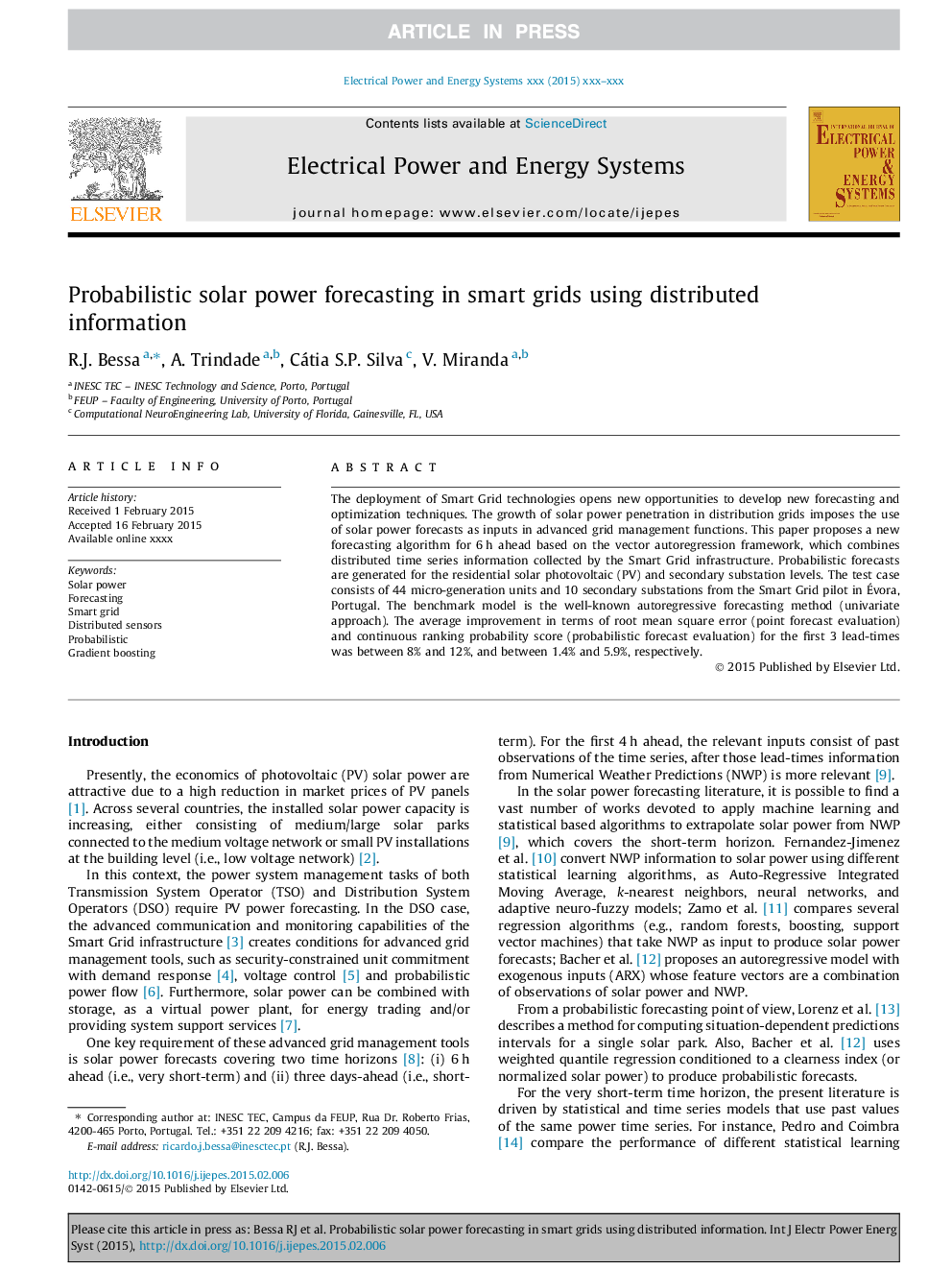| Article ID | Journal | Published Year | Pages | File Type |
|---|---|---|---|---|
| 6859657 | International Journal of Electrical Power & Energy Systems | 2015 | 8 Pages |
Abstract
The deployment of Smart Grid technologies opens new opportunities to develop new forecasting and optimization techniques. The growth of solar power penetration in distribution grids imposes the use of solar power forecasts as inputs in advanced grid management functions. This paper proposes a new forecasting algorithm for 6Â h ahead based on the vector autoregression framework, which combines distributed time series information collected by the Smart Grid infrastructure. Probabilistic forecasts are generated for the residential solar photovoltaic (PV) and secondary substation levels. The test case consists of 44 micro-generation units and 10 secondary substations from the Smart Grid pilot in Ãvora, Portugal. The benchmark model is the well-known autoregressive forecasting method (univariate approach). The average improvement in terms of root mean square error (point forecast evaluation) and continuous ranking probability score (probabilistic forecast evaluation) for the first 3 lead-times was between 8% and 12%, and between 1.4% and 5.9%, respectively.
Related Topics
Physical Sciences and Engineering
Computer Science
Artificial Intelligence
Authors
R.J. Bessa, A. Trindade, Cátia S.P. Silva, V. Miranda,
